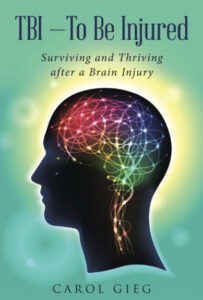David Snowdon’s work, as principle investigator for the “Nun Study of Aging and Alzheimer’s Disease,” determined several variables which contribute to a decrease in the potential for contracting this awful disease and its impact on those we love. A group of nuns were found to develop dementia characteristics at a much lower rate than was found in the general population. Years of study revealed specific daily activities of these women, which seemed to lower the risk of developing Alzheimer’s Disease.
They socialized with each other, meeting often to discuss current events and how they might contribute best in the modern world.
They were very active, doing physical labor in the care of their convent, scrubbing the stone floors vigorously while on hands and knees. They did yard work and their own home maintenance as much as possible.
They did not smoke or drink alcohol, as did many people. These two factors alone, (both then and now) accounted for a myriad of health problems. Their diet was simple and, by most people’s standards, healthy.
They were very emotionally supportive of each other, thus equipping themselves to manage stress well, both in their personal and the modern world.
They were engaged in spiritual growth through prayer, as a daily practice.
Snowdon’s study has lead to numerous others, exploring the life conditions which seem to reduce the risk of developing Alzheimer’s disease.
Dr. Ethelle G. Lord posted an article in the blog of the International Caregivers Association, entitled The Four Pillars of Prevention (July 24,2015). This article elaborated on the variables contributing to prevention. “These include physical and mental exercise, diet, stress management, and spiritual growth.”
Thus, socializing, engaging in mind stimulating exercises, eating well, not smoking, drinking in moderation, eating a healthy diet and engaging in some form of spiritual practice are significant in predicting and influencing brain health and cognition later in life.
But, most important by far (when all other factors are considered) is, as you might guess–exercise. I intuited this last one, long before it was proven to be true in controlled studies.
We can learn, then, ways to incorporate what we now know, into our daily lives. These activities stimulate the brain. Some might be as simple as doing crossword puzzles or playing chess. More formally, there are exercises touted to enhance cognitive function and memory. Many of these are now readily available online (e.g., Lumosity, Posit Science). Some of these “brain games,” have been challenged regarding the claim that they have a positive effect on brain functioning. However, if scores improve, injured people may feel more optimistic versus without hope. The idea of exercising the brain (like a muscle) to grow stronger, seems possible. If we remain informed about research regarding the validity of the claims, our choice to continue, or not, may be empowering.
Other resources available, come in book form (e.g., The Memory Bible by Gary Small M.D. and, A User’s Guide to the Brain by Harvard medical school professor, John Ratey M.D. This second book preceded Ratey’s next book, Go Wild, (co-authored with journalist John Manning). Go Wild emphasizes the importance of exercise even more elaborately than does A User’s Guide to the Brain. Their assertions are based on findings determined through research, as noted in the book.
The website HelpGuide.org (the “primary project of HelpGuideOrg International, a nonprofit organization) lists “The Six Pillars of Alzheimer’s Prevention,” including: “Regular exercise, A healthy diet, Mental stimulation, Quality sleep, Stress management, An active social life.”
Other studies have replicated these results, some adding other variables which seem to predict positive outcomes. These include writing with the nondominant hand (Keep Your Brain Alive:83 Neurobic Exercises to Help Prevent Memories Loss and Increase Mental Fitness by Lawrence Katz, Manning Rubin, David Suter)and learning a new language as an adult (Growth of Language-Related Brain Areas After Foreign Language Learning –as reported in Neurolmage October 2012, Volume 63–(by Johan Martensson, Johan Erickkson, Nils Christian Bodammer, Magnus Lindgren, Mikael Johansson, Lars Nyberg, Martin Lovden).
More information available in my book TBI to be Injured: Surviving and Thriving after a Brain Injury.
